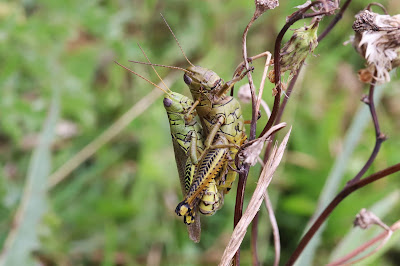Great Golden Digger Wasp!
Upon returning home from a walk, I noticed a Great Golden Digger Wasp fly onto the front walk. She was carrying a Drumming Katydid. Based upon the loose dirt on the ground, a tunnel had recently been dug by the Digger Wasp.
Having paralyzed her prey, she dropped the Katydid and returned to the underground chamber to make final preparations for egg laying.
 |
Green Herons
Green Herons have mostly migrated south from our area. Here are some photos I took recently as a heron hunted in front of me. It only caught a tiny minnow in the 20 minutes that I watched.









.JPG)
.JPG)







































